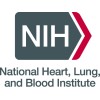
TweeSteden Mild Stenosis Study
Coronary Artery DiseaseNon-significant Coronary Artery Disease2 morePsychosocial factors have been found to be associated with an increased risk for coronary artery disease incidence, progression and worse clinical outcomes. Patients with non-significant coronary artery disease (confirmed vascular irregularities, but <60% coronary occlusion) often present with complaints such as chest pain, which warrant screening by coronary angiography (CAG) or computed tomography (CT scan). The prognosis of this group of patients with mild stenosis remains to be investigated in more detail, and we propose that psychosocial factors play a role in the clinical prognosis and patient reported outcomes in this group. A special focus lies within examining personality characteristics, of which Type D personality is a primary predictor variable for prognosis. Type D personality is characterised by high negative affect and high social inhibition. In addition to psychosocial factors (personality, mood state, social support, SES), biomarkers(inflammation, clotting, DNA) as well as standard clinical risk factors (metabolic syndrome, activity level, smoking, medication use, disease severity) will be investigated. The goal of the proposed study is to investigate a preexisting psycho-biochemical risk profile for major adverse cardiovascular events (MACE) and patient perceived symptoms in a group with angiographically or CT-scan confirmed, non-significant coronary artery disease.

PRE-DETERMINE Cohort Study
Coronary Artery DiseaseLeft Ventricular Dysfunction1 moreThis is a prospective, multi-center cohort study of patients with a history of coronary artery disease (CAD) and documentation of either a prior myocardial infarction (MI) or mild to moderate left ventricular dysfunction (LVEF 35-50%). The primary objective of this study is to determine whether biologic markers and ECGs can be utilized to advance SCD risk prediction in patients with CHD and LVEF>30-35%. The overarching goal of the study is to identify a series of markers that alone or in combination specifically predict risk of arrhythmic death as compared to other causes of mortality among this at risk population of coronary heart disease (CHD) patients with preserved left ventricular ejection fraction (LVEF> 30-35%). If biologic or ECG markers are identified that can specifically predict risk of ventricular arrhythmias, then these markers may serve as relatively inexpensive methods to identify those at risk. The public health impact of identifying markers could be quite substantial, leading to more efficient utilization of ICDs and advances in our understanding of mechanisms underlying SCD.

COMPETE: A Clinical Evaluation of Chrono Carbostent Carbofilm™ Coated Stent
Coronary Atherosclerotic DiseaseCoronary Occlusive Diseases3 moreThe COMPETE study is a prospective,randomized,two-arm multi-center clinical trial comparing two commercially available coronary stents: Chrono Carbostent Carbofilm™ Coated vs Driver/Micro-Driver Coronary Stent System. In this study, 204 subjects will be included (2:1 randomization Chrono:Driver/Micro Driver) in 6 Italian sites.

Optical Coherence Tomography Following Paclitaxel Eluting Stent Implantation in Multivessel Coronary...
Coronary Artery DiseaseA prospective Optical Coherence Tomography (OCT) study on the completeness of strut coverage and vessel wall response, at different time points (3-6-9 Months), following TAXUS Liberte stent implantation (staged procedures) in patients with multi vessel native coronary artery lesions

Multicentre Radial Artery Patency Study: Results of Patency Beyond 5 Years After Coronary Artery...
Coronary Artery DiseaseBypass surgery is often required to treat severe coronary heart disease. Either arteries or veins can be used as bypass grafts. We wish to compare the long-term durability of the saphenous vein from the leg to that of the radial artery from the fore-arm when used as bypass grafts. We are examining how many of these grafts are still functioning beyond 5 years after bypass surgery by performing a coronary angiogram. After 1-year, we found that radial arteries were more likely to be functioning than saphenous veins. We hypothesize that radial arteries will continue to be superior beyond 5 years.

Study on the Prognosis and Effect of Anti-diabetic Drugs on Type-2 Diabetes Mellitus With Coronary...
Type 2 DiabetesCoronary Artery DiseaseThe purpose of this study is to explore the recurrence risk of cardiovascular events in patients with type 2 diabetes mellitus and coronary heart disease after different antidiabetic drug therapy (glipizide or metformin) by using an double-blind, randomized, parallel control and prospective study The end point of this study is: follow up 3yr recurrence of cardiovascular event death caused by other reasons such as stroke, uremia, blindness and amputation

A Randomized, Multi-Center Study of the Pimecrolimus-Eluting and Pimecrolimus/Paclitaxel-Eluting...
Coronary DiseaseTo demonstrate non-inferiority in 6-month angiographic in-stent late lumen loss of the pimecrolimus-eluting coronary stent (Corio) compared to the CoStar coronary stent control arm and the dual pimecrolimus/paclitaxel-eluting (Symbio) coronary stent compared to the CoStar coronary stent control arm for the treatment of single de novo lesions <25 mm in length in native coronary arteries 2.5 - 3.5 mm in diameter.

Reduced Manipulation of the Aorta and Neurobehavioral Outcome Trial
Coronary DiseaseThe purpose of this trial is to determine whether aortic manipulation in patients undergoing coronary bypass graft surgery leads to increased incidence of microemboli and subsequent impairment of neurobehavioral function.

MRI Evaluation of Chest Pain
Chest PainCoronary Disease1 moreThis study will assess the value of magnetic resonance imaging (MRI) in detecting heart attack and heart attack risk in patients who come to the hospital emergency room because of chest pain. It will also investigate whether MRI can help predict the coronary status of patients 4 to 6 weeks and 1 year after emergency room admission. Patients who come to the emergency room of Suburban Hospital in Bethesda, MD, because of chest pain may be asked to enroll in this study if they have not been diagnosed as having a heart attack. Participating patients will undergo a MRI scan as soon as emergency room doctors determine they are in stable condition. For this procedure, the patient lies on a table that slides into the MRI scanner-a large tubular machine with a magnetic field. During the scan, a contrast material is injected into the vein. This material brightens the image of the heart so that the blood flow can be seen. The scan will show if there are areas of heart muscle that received insufficient blood flow. A second scan will be done within 72 hours to look for coronary artery blockage that may require treatment. Patients will be followed by telephone 4 to 8 weeks after the scans and again 1 year after the scans to ask about any significant medical problems that may have occurred during those time periods. This study will provide information that may improve emergency treatment of patients with acute chest pain by clarifying which patients require immediate medical treatment, which should be admitted to the hospital for further evaluation, and which may safely be discharged from the hospital.

Periodization of Exercise Training in Patients With Coronary Heart Disease.
Coronary Heart DiseaseHealthy ControlThe research project includes two components that assess exercise physiology parameters, cerebrovascular reserve, cognitive functions and cardiac function in coronary heart disease patients at rest, during an acute exercise, and after two different periodized training programs.
